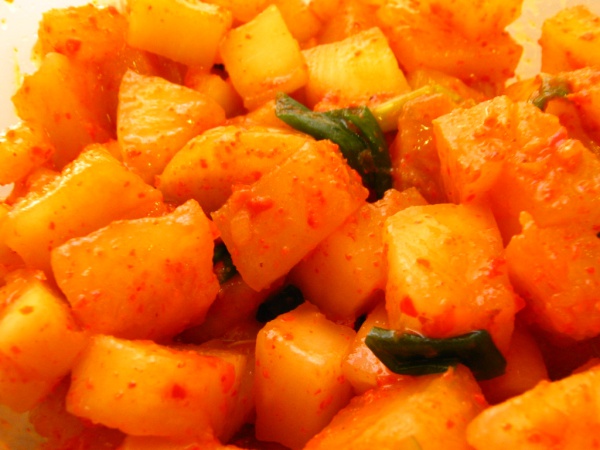Facts About Kkakdugi
Kkakdugi, or diced radish kimchi, is a cherished staple in Korean cuisine. Unlike traditional kimchi, which utilizes napa cabbage, kkakdugi features the crisp and crunchy Korean radish. This dish is a common banchan, or side dish, enjoyed across Korea.
According to tradition, kkakdugi was introduced by Princess Sukseon, the daughter of King Jeongjo. She brought this distinctive dish to the royal court where it quickly gained popularity among the common people.
Making kkakdugi is relatively straightforward. You begin by chopping the radish into bite-sized cubes. These cubes are then seasoned with salt, red chili powder, green onions, and ginger. After thoroughly mixing, the radish is left to ferment in earthenware pots for about two weeks. The result is a dish that is served cold to maintain the radish's crispness before it softens during fermentation. Like other varieties of kimchi, kkakdugi provides numerous health benefits due to its fermentation process.
There are several varieties of kkakdugi to explore. While the classic version is delightful, you can also try variations like gul kkakdugi, which includes oysters, or gegeolmu kkakdugi, made with a specific type of radish called gegeolmu. Other interesting versions include myeongtae seodeori kkakdugi, suk kkakdugi, and musongsongi, each offering its own unique flavor and texture.
Kkakdugi pairs wonderfully with Korean soups such as seolleongtang (ox bone soup), galbitang (short rib soup), and samgyetang (ginseng chicken soup). The radish not only aids digestion but also enhances the flavors of these hearty soups.
This traditional dish holds a special place in Korean culture, cherished for its delicious taste, health benefits, and its role in the country's rich culinary traditions.

 North Korea
North Korea